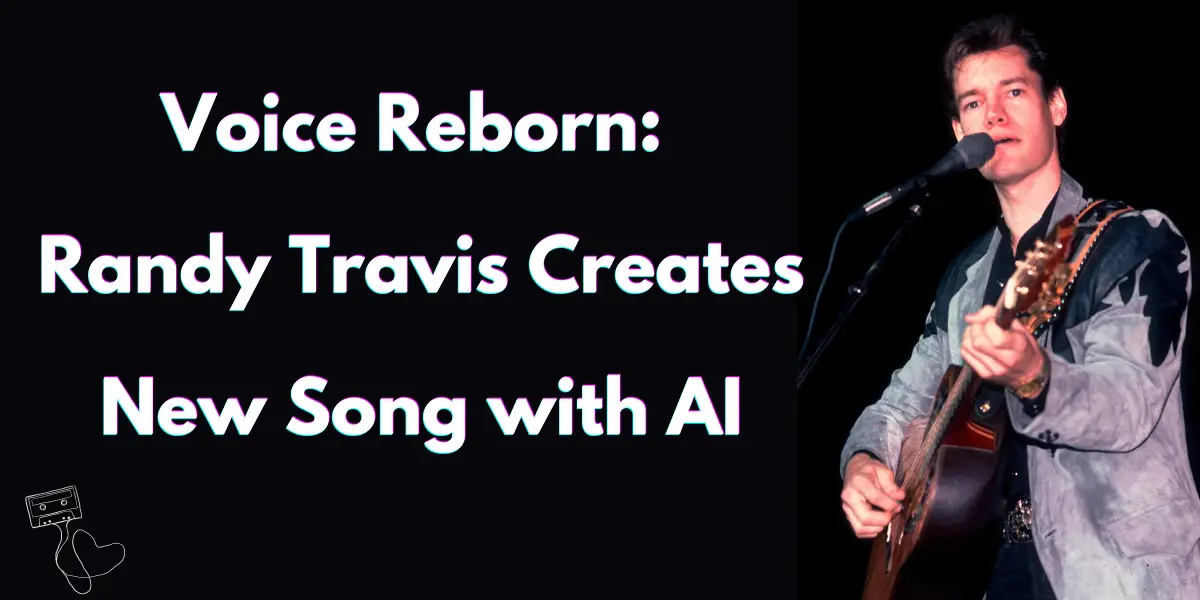Voice Reborn: Randy Travis Creates New Song with AI

In a remarkable fusion of technology and talent, Randy Travis, a legend in the realm of country music, has found his voice again—not through traditional means but through the marvels of artificial intelligence. This article delves into the journey of Travis’s voice resurrection, exploring not just the technology but also the profound impacts on music and the possibilities it heralds for artists facing similar challenges.
Randy Travis revitalizes his singing voice through AI, marking a pioneering moment for music and technology. This article examines the integration’s impact on the artist and the industry.
Table of Contents
Who is Randy Travis?
Randy Travis is an icon in country music, known for his deep baritone and the soul-stirring depth of his songs. His career, adorned with numerous awards and accolades, took a heartbreaking turn in 2013 when a severe stroke left him with significant physical limitations, including the loss of his singing ability. This unfortunate event could have been the end of his musical contributions, but AI has opened a new chapter for him.
Why does Randy Travis use Al to create a new song?
Randy Travis’s decision to utilize artificial intelligence for creating new music is deeply rooted in his personal journey and the challenges he has faced. After suffering a debilitating stroke, Travis found himself unable to perform, leaving a void not only in his life but also in the hearts of his fans.
- Overcoming Physical Limitations: The stroke severely affected Travis’s ability to sing, but AI provides a way for him to bypass these physical constraints and continue his musical expression.
- Preserving Musical Legacy: AI helps maintain Travis’s presence in the music world, ensuring his voice and style endure despite his health challenges.
- Innovative Artistic Expression: Utilizing AI allows Travis to explore new creative processes, blending traditional music-making with cutting-edge technology.
- Engagement with Fans: By releasing new songs, Travis re-engages with his audience, providing them with fresh material and maintaining his relevance in the industry.
How AI helps Randy Travis create the new song?

Artificial intelligence has opened a new frontier in music production, especially for artists like Randy Travis who face physical challenges. Here’s how AI contributed to his latest song:
Technical Voice Reconstruction
AI reconstructed Travis’s voice by analyzing old recordings.
- Data Analysis: Using deep learning algorithms, the AI analyzed patterns in Travis’s vocal recordings.
- Voice Synthesis: It then synthesized his voice from the patterns, creating a digital vocal track.
Enhancing Vocal Authenticity
To ensure the AI voice closely matched Travis’s, additional enhancements were made.
- Pitch Correction: Adjustments to pitch ensured the voice remained true to his original tone.
- Timbre Adjustments: Modifications to timbre preserved the distinctive qualities of his voice.
Emotional Expression Through AI
Capturing the emotional depth of Travis’s voice was crucial.
- Emotion Modeling: AI models were trained to mimic the emotional inflections Travis is known for.
- Dynamic Range: Adjusting the dynamic range allowed the AI to express varying emotional intensities.
AI voice compares to the original artist’s voice?
AI voice cloning technology has made significant strides, but how does it stack up against the real thing?
Introduction: While AI can replicate the technical aspects of a voice, capturing the soul of the artist is more challenging.
- Accuracy in Tone and Pitch: AI is highly effective at duplicating precise vocal tones and pitches.
- Lack of Subtle Nuances: It often misses the finer emotional nuances that give a performance its heart.
- Consistency vs. Variation: AI provides consistent vocal output, which can lack the natural variation found in human performances.
Public Reaction to Randy Travis's AI Song

The release of Randy Travis’s AI-assisted song has generated mixed reactions. Many fans are thrilled, seeing it as a touching continuation of his legacy, allowing them to experience his voice anew. Others, however, are skeptical, questioning whether an AI can truly replicate the emotional depth of a human-performed song. This division highlights the broader debate about the role of technology in music, balancing excitement for innovation with concerns for authenticity. As AI evolves, its impact on music remains a poignant topic of discussion.
Potential of AI to reinvigorate the disabled artists
Artificial intelligence is proving to be a game-changer for artists with disabilities, providing them with new avenues to express their creativity without physical limitations.
- Accessibility: AI can offer tools that adapt to the artist’s physical capabilities, allowing them to continue creating music.
- Voice Recovery: For those who have lost their ability to perform vocally, AI can recreate their singing voice, as seen with Randy Travis.
- Innovative Expression: AI opens up new forms of musical expression that were not previously possible, pushing artistic boundaries.
- Inspiration: The success stories can inspire other disabled artists to explore AI solutions for their artistic endeavors.
Impact of Randy Travis' new song on the future of music

Randy Travis’s new AI-assisted song represents more than just a technological achievement; it heralds a new era in music production. This development points toward a future where technology and tradition merge more seamlessly. AI’s ability to recreate and enhance musical performances can serve not only as a rehabilitative tool but also as a creative partner, potentially leading to entirely new genres and styles that blend human creativity with algorithmic precision. As the music industry observes the reception and capabilities of AI like that used for Travis, it may pave the way for more widespread adoption, influencing everything from production techniques to artist collaborations. This could significantly alter the music landscape, challenging our concepts of authorship and creativity.
Also read: Billie Eilish Meets AI: A Symphony of Technology and Talent Redefining Music
Ethical considerations for using AI in music
The integration of artificial intelligence in music, exemplified by Randy Travis’s new song, raises significant ethical considerations. As this technology becomes more pervasive, the music industry must grapple with the implications of AI in the creation and performance of music. These concerns are not just about the authenticity of the art but extend to the rights, privacy, and legacy of the artists involved.
Ownership and Copyright
Who holds the rights to music created with the help of AI? This question becomes complex when AI is used to mimic the style or voice of existing artists. There’s a delicate balance between using technology to enhance music production and potentially infringing on the intellectual property rights of the creators. Establishing clear guidelines for copyright ownership in AI-generated music is crucial to protect the interests of all parties involved.
Consent and Legacy
Using AI to replicate the voices of deceased artists or to continue the careers of living artists without their explicit ongoing consent can lead to ethical dilemmas. It is essential to consider how such actions might impact the legacy of artists. Respect for their life’s work and how they are remembered should guide the development and use of AI technologies in music.
Transparency
Transparency in the use of AI in music production is vital. Consumers should know when they are listening to an AI-generated piece versus a human creation. This transparency extends to how AI is used in the production process—whether enhancing human performance or generating music independently. Clear communication can help manage expectations and maintain trust among audiences.
Conclusion
Randy Travis’s venture into AI-assisted music creation marks a significant milestone in the intersection of technology and artistry. This initiative not only showcases the potential for AI to offer new avenues of creative expression but also raises important ethical considerations. As we move forward, balancing innovation with respect for artistic integrity will be crucial in shaping a future where technology enhances rather than overshadows the human element in music.

